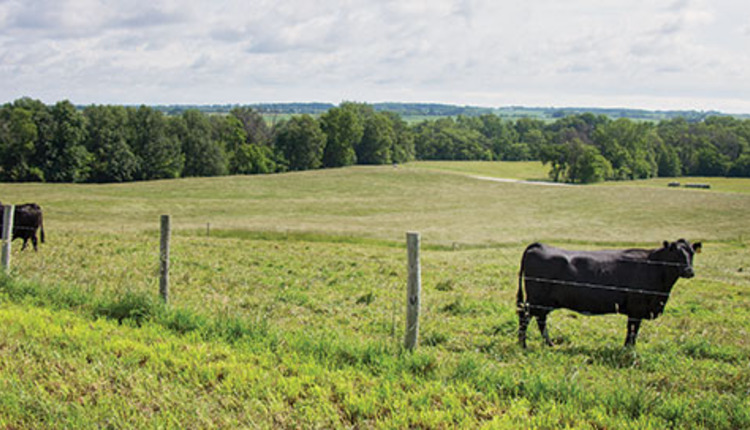
It’s the middle of the summer. For most of the United States, August is the warmest month of the year and typically one of the driest months except for the Southwestern and Coastal states. By this time of the growing season, 80 to 90 percent of the annual warm-season perennial forage production has been achieved. Very little new growth is expected from the warm-season grasses even if an anomaly in the weather occurs. With fall moisture, cool-season forages will begin a new growing season; however, most of the cool-season forage production will occur in the spring of the new year.
With the growing season mostly behind us, what management options should producers be considering during the summer slump? There are several items such as water availability in the pastures where cattle will be grazing, forage reserves, residual management, overall balance between forage supply and stocking rate, potential fall and winter pasture alternatives, and preparations for the coming growing season.
Livestock water availability. Water is a daily requirement for livestock, and requirements grow drastically with the high temperatures of summer. Having access to adequate water quantity and quality makes a difference in livestock performance and grazing accessibility of pastures. If you know some pastures are prone to water issues later in the season, graze them early while water is available. Consider strategies to enhance water availability and distribution in pastures where water is a routine summertime issue.
Forage reserves. An updated forage inventory can be estimated at this time. This includes all stored forages such as hay, haylage, and silage reserves, as well as an estimate of what will be produced in the next month. If production is behind schedule or if you purchase your reserve needs, now is the time to backfill the projected needs. It is important to know the quality of forages on hand and that which is to be considered for purchase. Ideally, your reserve forages will either exceed or be close to meeting livestock requirements for nutrient quality to minimize supplemental feed needs.
Residual management. It is also important to take into account the residual that needs to be left at the end of the year to ensure the vitality and integrity of perennial forages into the next growing season. For most perennial pasture forage types, a residue height of greater than 4 inches is needed to protect the plants from winter damage; native tall grasses would respond better to a 6- to 8-inch residue height.
Managing the grazing so that adequate residues are maintained through the winter is often the difference between a healthy forage resource and a degraded resource, which will be reflected in the following growing season or seasons if repeatedly grazed too severely. It certainly can reduce or eliminate the need for weed control in grazing pastures next year.
Forage supply and stocking rate balance. Now is a good time for producers to assess their forage supply and measure it against the anticipated forage demand for the entire year. To date, we have a good understanding of the growing season, how the forages responded, and how the livestock have fared. With most of the growing season behind us, we need enough standing forage and reserves to carry the livestock from now through winter. If pastures are grazed shorter than desired for this time of year, contingency plans need consideration as only a small percentage of pasture is expected to be grown between now and first frost.
Early weaning can relieve some demand. Destocking to some degree might be necessary, but that does not always mean the extra cattle have to be sold. They can be relocated to areas that have excess forage. Although this comes with an extra cost, it may be less expensive than either liquidating a portion of the herd or trying to feed through a forage slump. That is why contingency plans need to be thought through while there is time to truly evaluate the options.
Potential fall and winter pasture. Some cool-season forage production can be expected and needs to be included in the planned forage supply. The options for fall and winter pasture in the Northern states are more limited, but even lightly grazed native grass pastures deferred from grazing from now until frost can provide grazeable pasture for much of the winter season. Unless you are in the Deep South, spring green up is at least six months away. However, if you are in the milder climates, there are opportunities to grow additional pasture with adequate moisture, especially with introduced forages and annual crops.
Cool-season forages, perennials, and annuals grown this fall can often allow grazing through the winter, and stockpiled warm-season grasses (fall fertilized and deferred from grazing until after frost) can provide grazing often through the end of the year. The key is to apply fertilizer with the early fall rains to allow for maximum production before winter sets in. Of course, cool-season annual forages need to be planted early in the fall as well.
This article appeared in the August/September 2017 issue of Hay & Forage Grower on pages 26 and 27.
Not a subscriber? Click to get the print magazine

